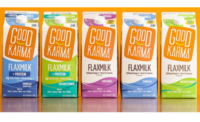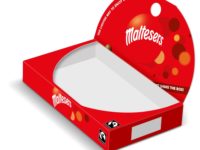An alternative to transparent barrier film containing PVdC (polyvinylidene chloride) has been on the wish list of food manufacturers, CPGs and converters for years. It’s not because PVdC-coated OPP film hasn’t performed well overall. In fact, it has served two important functions for more than three decades: It effectively keeps bakery and snack foods fresh inside their packaging and gives consumers a “window” to the product inside.
However, the film has several drawbacks. As it ages, it yellows, becomes brittle and is prone to flex cracking with force. It has experienced price increases that have made end-user costs surge, and it has necessitated that many flexographic printer/converters use EMA additives or other supplemental materials to promote bond adhesion when laminating to PVdC-coated OPP.
Aside from these aforementioned concerns, reports about PVdC-coated films’ potential negative long-term effect on the environment have made some manufacturers uneasy. The United States allows PVdC use, but it is restricted or banned in several other countries.
PVdC film alternatives are on the wish lists of many parties, and fortunately, things are starting to pick up in this arena. Take Torayfan CBS2 BOPP film from Toray Plastics (America), for instance. Introduced last year, Packaging Products Corp. was approached about the film in 2012 during its development to gauge interest in conducting trials and analyzing it up against traditional PVdC-coated BOPP.
Even though qualifying a new film for use in a lamination is a considerable project for a converter/printer, PPC obliged for several reasons. First, it wanted to explore the possibility of offering customers a new option for clear, thin OPP with enhanced oxygen and moisture barrier, particularly one that came without some of the drawbacks of the traditional material. Second, CBS2 film would be priced competitively, which could help reduce costs.
CBS2 BOPP Film on Trial
Extensive trial work, which compared the CBS2 barrier durability in both flat sheet and lamination formats, and the CBS2 lamination bond with the outside co-extruded BOPP print web, was carried out. Before delivering the film to PPC, moisture and oxygen levels were vetted.
PPC then sent laminated samples to a qualified lab to verify that the barrier was remaining consistent. Both the OTR and WVTR results aligned with data sheets.
The testing showed clearly that CBS2 offered excellent moisture- and oxygen-barrier and had superior lamination bond. The film also provided a wide heat-seal range, excellent oil resistance and increased puncture resistance and stiffness. PPC has not had to prime, use additives or change its normal lamination process in any way to achieve high lamination bonds using the film.
PPC also found that, in addition to longer storage life and reduced environmental impact, CBS2 provided key cost advantages. Because it offers a higher yield compared to PVdC-coated OPP, converter/printers get more footage from every pound of film. CBS2 also provides economies over the aluminum oxide-coated films often used in similar applications. In addition, by down gauging to 70 and 80 gauges, CBS2 proved itself to be more cost-effective than thicker OPP films that also are used for snack food packaging.
Taking it to Market
PPC suggested the CBS2 film to one of its customers, snack food manufacturer Utz Quality Foods. Because Utz often has to ship products for long distances, the company has stringent barrier requirements and was a natural candidate for the high-performance film.
Utz had been affected by the substantial cost increase PVdC-coated film experienced in early 2014 and was open to considering a second barrier material option. In the commercialization of a new product, end users commonly run their own trials, but because the trials on CBS2 film were thorough and conclusively determined barrier after packaging, Utz accepted the test data and declined to run its own barrier trials. The company did test the material on its packaging machinery, determining from the test that CBS2 and PVdC-coated film had virtually no performance differences.
Utz first used the film on its three-ounce party mix. The company now uses the material on more than two dozen products, including any Utz-brand tortilla chip, party mix, corn chip, Puff N’ Corn or similar salty snack in the portfolio that doesn’t require a metallized layer. PPC’s lamination combines the film with a print web. The end result shows off Utz’s products through clear windows in colorful pouches that create eye-catching shelf displays. Several other PPC customers now are testing the film for their own packaging.
Companies that manufacture food products that are high in oils or highly moisture-sensitive, as well as those that make non-food products like pet treats and car fresheners, will find that CBS2 provides distinct advantages over PVdC-coated film. The new film may facilitate expansion of manufacturers’ distribution channels, enable the use of more natural ingredients in products and open up new markets. Its potential applications are extensive.
Packaging Products Corp.
(913) 262-3033
www.packagingproductscorp.com







